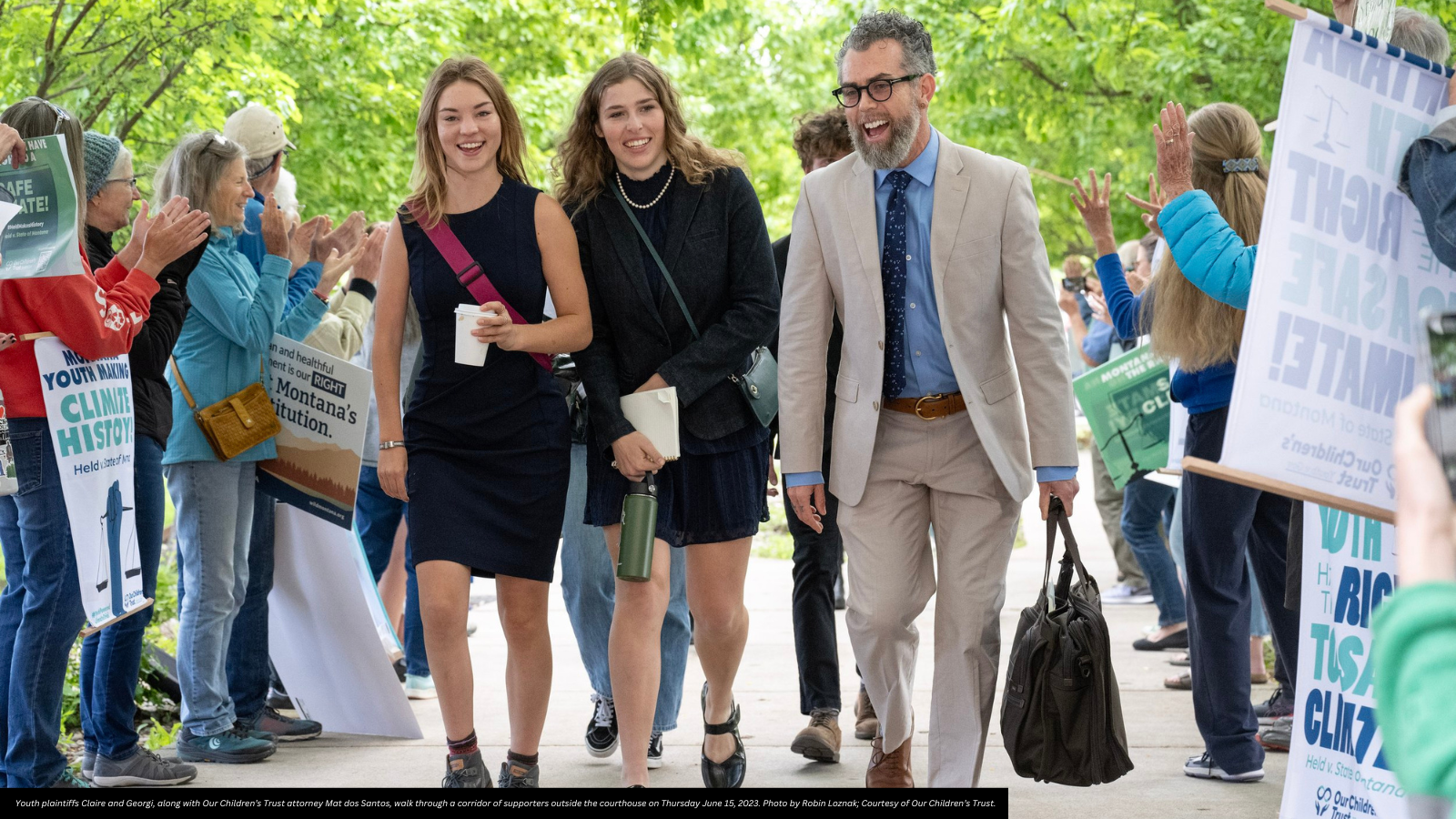Overview
After researching and speaking with plaintiffs from the landmark climate lawsuit Held v. Montana, I wrote an article for the USC Annenberg Center for Climate Journalism and Communication about the lessons the case holds for people seeking to effectively communicate the impacts and need for action on climate change. Read the full article here.
Opening Excerpt
When the kids took Montana to court
On an early June morning last year, I sat down in my apartment to start another day of remote work when I saw a newsletter in my inbox titled, “Youth activists sue Montana.” It was referencing the upcoming trial in the highly anticipated climate lawsuit Held v. Montana, where 16 young people were suing the state –– one of the largest coal producers in the country –– for contributing to the climate crisis and violating their right to a healthy environment. (In fact, Montana is one of the few states that guarantees residents the right to a healthy environment in its constitution.)
Reading about the case and the impending trial, I was excited and nervous; I admired the youth climate advocates but also felt skeptical towards the judicial system upon which the lawsuit’s fate rested. I quickly tempered my expectations and assumed that the lawsuit would likely be unsuccessful. But I was also hopeful that it could at least spark broader conversations around the impacts of the climate crisis.
On August 14, the judgment came and I was pleased to learn that I was wrong. The Montana judge, District Court Judge Kathy Seeley, had ruled in favor of the youth plaintiffs. The ruling affirmed their right to a healthy environment, found Montana to be in violation of those rights, and struck down two state statutes that promoted reckless fossil fuel development. In other words, 16 kids took a U.S. state to court for contributing to climate change and won.
Lessons Learned for Climate Communicators and Advocates
As a young person working in the environmental space, this monumental victory made me feel more determined and hopeful about our future. But I also wondered: how did this youth-led group become successful? What can we climate advocates and communicators learn from their success?
Below, I explore some of the winning climate communication strategies from the case:
